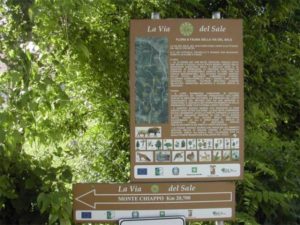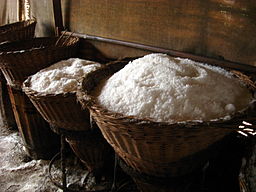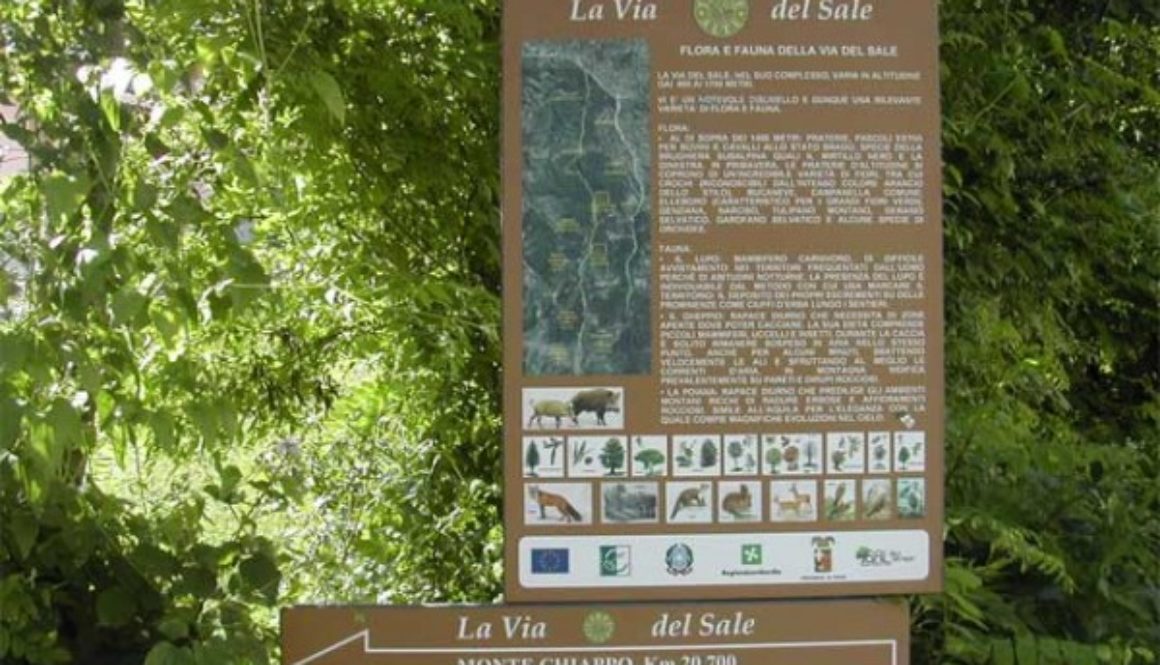The Salt Road
 Parma, situated in the Po Valley of Northern Italy, is world famous for its food products: the Parmesan cheese and the prosciutto ham, both protected by European law. As it happens the production and preservation of these two mouth watering delicacies requires salt, lots of salt. In this Parma is fortunate to be located, probably not accidentally, near the brine sources of Salsomaggiore, already taken into production by the Romans and revived in the times of Charlemagne. But, contrary to the ham makers, the picky cheese makers of Parma preferred the coarser sea salt, of the area around Venice and Ravenna (Comacchio and Cervia) or imported from even further areas via the port of Genoa.
Parma, situated in the Po Valley of Northern Italy, is world famous for its food products: the Parmesan cheese and the prosciutto ham, both protected by European law. As it happens the production and preservation of these two mouth watering delicacies requires salt, lots of salt. In this Parma is fortunate to be located, probably not accidentally, near the brine sources of Salsomaggiore, already taken into production by the Romans and revived in the times of Charlemagne. But, contrary to the ham makers, the picky cheese makers of Parma preferred the coarser sea salt, of the area around Venice and Ravenna (Comacchio and Cervia) or imported from even further areas via the port of Genoa.
Salt from the Mediterranean
 In the latter case the salt had to be transported over land, over the hills and mountains of the Apennines by entire caravans of mules. In the 16th century the Farnese family is said to have employed over 5000 mules to satisfy their needs (source: Salt – A World History – Mark Kurlansky – Penguin Books 2003). There was no fixed route for the transport from Genoa to Piacenza, where the heavy load was put in barges and carried to Parma via the Po river. Instead, a whole range of so-called salt roads existed, carrying the precious load via different duchies and principalities, avoiding high taxes (smuggling) or enemy territory. And there were other salt roads going to Pavia and Milan and other cities as well.
In the latter case the salt had to be transported over land, over the hills and mountains of the Apennines by entire caravans of mules. In the 16th century the Farnese family is said to have employed over 5000 mules to satisfy their needs (source: Salt – A World History – Mark Kurlansky – Penguin Books 2003). There was no fixed route for the transport from Genoa to Piacenza, where the heavy load was put in barges and carried to Parma via the Po river. Instead, a whole range of so-called salt roads existed, carrying the precious load via different duchies and principalities, avoiding high taxes (smuggling) or enemy territory. And there were other salt roads going to Pavia and Milan and other cities as well.
 Today, it is possible to (partly) follow some of these itineraries that will carry you through the beautiful Valle Staffora of the Oltrepò Pavese and the Valle Trebbia of Emiglia Romagna. Along the way you pass the historical cities of Varzi in Lombardia with its medieval center and Bobbio, resting place of San Colombano.
Today, it is possible to (partly) follow some of these itineraries that will carry you through the beautiful Valle Staffora of the Oltrepò Pavese and the Valle Trebbia of Emiglia Romagna. Along the way you pass the historical cities of Varzi in Lombardia with its medieval center and Bobbio, resting place of San Colombano.

